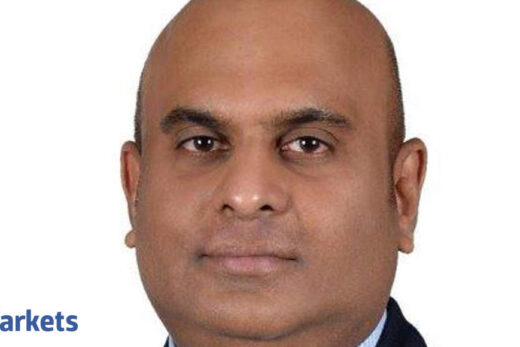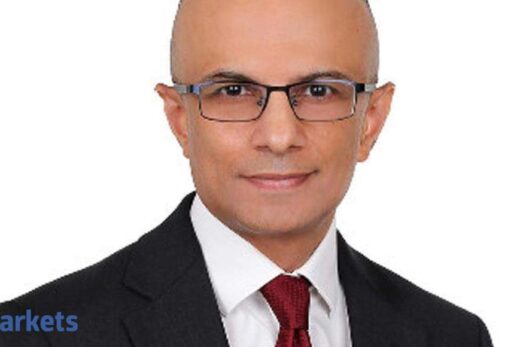Let us talk about the Covid situation. There was a lot of panic in April and early May, but now things are looking better. Are things looking up on the supply front?
My belief is that a lot of supply constraints for the main Covid drugs are now abating. In the case of Remdesivir, with the step up in capacities across the manufacturing chain, there will be enough stock in the market. Whether it is Dexamethasone or Enoxaparin, a lot of supply is currently available as is that for Favipiravir. So the problem with the supply of mainstay has been addressed to a large extent. As the disease continues to shift, right now, we are seeing black fungus or mucormycosis cases on the rise. It would probably require a little bit of time for people to step up to those conditions because the disease sequelae keeps shifting. It was different in wave one. It is different in wave two. Within wave two also, we have seen the second part of wave two is different. So some of those are being stepped up. But I would like to believe that most of the drugs that are manufactured in India, a large portion of the scaling up has been done.
Are you likely to shift the focus of manufacturing activity and prioritise Covid related drugs more?
Before Q4, about 5% of our contribution came from Covid drugs. In Q4, about 3% of overall company sales came from Covid drugs. So it is a part of our portfolio but our core portfolio is strong and momentum from that portfolio is also very high. But if the society requires us to step in to create access for more drugs that are required for Covid, Cipla will always be there at the forefront.
Are you preparing for the third wave? Are you keeping stocks ready?
Unfortunately I am in the supply chain for these medicines. I do not have either the wisdom or the ability to look at it. But I would comment more like a common man as I have seen parents or friends go through this. The first is, there has to be a stock pile because if there is ever a big outbreak like the one we have gone through in India and hopefully the wave three will not be as quickly ascendant as we have seen this wave to be. I would expect some kind of a stock piles to exist either within various manufacturers or in a tie-up with the government to be able to respond to an immediate crisis giving the manufacturing industry time to scale up.
So I would create some strategic stockpile of the drug if that is possible at all. Second would be vaccination and its prevention and the third would be the ability to localise a large part of the chain in India. For example, today paracetamol or Azithromycin is a large chunk of that chain but it still comes from outside of the country. Is it possible to begin to localise some of that chain here which not only has an impact on how quickly we scale but also how affordable it is. I would have those three suggestions. Various states have taken the lead in ensuring the supply of oxygen and beds and hospitals. Some kind of a central database and a website where people can see there is adequate oxygen.
“Before Q4, about 5% of our contribution came from Covid drugs. In Q4, about 3% of overall company sales came from Covid drugs.”
Again this is part of the strategic stockpile that we can create for a wave like this but also the fact that there is enough of a dashboard, I am told Kerala had some kind of dashboard showing availability of oxygen and hospital beds rather than people trying to find out by visiting these hospitals. Those could be three or four things that I would put as my learnings from this wave and crisis.
You have recently entered into a tie-up with Roche for the antibody cocktail to treat Covid-19. Can you share a little bit more.
Well the antibody cocktail is basically a combination of two drugs, two monoclonal antibodies which are used when a patient has mild to moderate Covid. If you have not been vaccinated, at the time you are infected, these two antibodies quickly relieve your body of symptoms. This is the closest you could get to having a vaccine if you get infected. The product will probably be available towards the later half of May in the country and we believe that this could help to vent huge complications for people who have not had vaccines even if they take the drug as soon as they are diagnosed with it.
Do you think sourcing raw material is an issue for mass production of Covid drugs?
Well we have the raw material but there is one raw material which is used in Remdesivir, which is in short supply globally. India buys a large chunk of that raw material. I think there has to be some effort in trying to increase the supply of that particular raw material. By and large, the Remdesivir chain has been optimised a great deal. I do not believe Remdesivir will be a constraint going forward. A lot of manufacturers and supply chains have significantly stepped up.
There has been so much noise around the shortage of the vaccine. How could this issue be approached?
I would think so. After this wave, there will be a very significant need and momentum for vaccinating as many people as we can. Already there are so many tie-ups to increase the capacity of the traditional adeno– vector based vaccines which we have in India. The disease is unfortunately shifting and so even if we get vaccinated, as the variants multiply, there will be a need for us to get booster shots.
As data plays out, we will know exactly what kind of immunity we have but yes, on the prime vaccine which is the two shot vaccine or the three shot vaccines as most people have them will be a very strong drive to inoculate a lot of people in India in the next six months.
In global trends China is the number one. In pharma talks, what will be the impact of India plus one strategy on growth?
I think India will continue to play its role in the pharmaceutical industry and it is a big shout-out to all our competitors, all our peer companies in the pharma universe. What each one of us has been able to do in Covid in terms of just scaling up is remarkable. So as much as we speak about supply, the pharma companies in India have done a remarkable job in trying to make sure that we are self-reliant and we are making a large amount of drugs within the country. Even on vaccines, that will happen.
More tie-ups are happening every day in terms of fill-finish capacity. India is already a powerhouse in adeno-based vaccines and I am hoping that over a period of time, India will begin to come out with different technology vaccines as well. We will continue to retain this position. I expect India to remain as a powerhouse of generic drugs and vaccines no matter what.
What about the numbers and things for the quarter gone by? There is a strong launch pipeline for your respiratory business for the next two to three years. Do you think all the hard work has happened and now it is time to pluck the fruits?
As our pipeline gets monetised and as we become bigger, we will have to continue to do the hard work on bringing more products into the pipeline which is what we are trying to do. But yes, a relentless focus on execution over what we have in our pipeline will enable us to launch a respiratory franchise and grow bigger from here.
Will complex generics drive the respiratory business?
Yes, I would like to believe that and not only in the US, it will be a very strong part of our portfolio in India. It will also be a very strong part of the portfolio in South Africa and all our emerging markets. So the leadership of the lung and the ability to bring more therapies that are based on cure from their path of the lung is something that Cipla will invest significantly in. It is also an area that Cipla has a lot of experience in dealing with but the opportunity and the challenges that the delivery of medicine to the lung will be intense. So, the lung will be a very significant portion of how our company’s future unlocks.
Last time when we saw the lockdown hitting businesses, we did see a lot of savings as well. With lockdowns continuing, how do you see things shaping up this time?
Some of the businesses will continue the way they have in the previous year and I think the reason for this is across a) that the lockdowns are there and b) also because a lot of us have re-imagined how we are going to work. We have got digital into our operations. Today we are onboarding people virtually. We are connecting with doctors, with medical facilities virtually and a lot of that re-imagination of the workplace has actually happened. For example, our manufacturing facilities are open but some of our offices still continue to be closed and we are operating virtually. This has changed the way we think of work. It has changed the way that we operate and may have made our operations a lot more productive.
ET Now: How do you think margins will change as we see increased digital adoption? What do you see as the major trend in the coming years?
Umang Vohra: It will only be digital but my hope is that we change the way we work and it makes it more productive for everyone. Even when we had demonetisation, the e-payments went up, then came down a bit but stayed at a level which is significantly higher than what it was pre-demonetisation. A similar thing will happen in all of our workings here and from pre-pandemic to post-pandemic, we will probably settle at a very different level of digital adoption. We expect 20-30-40% of it to stay digital and I hope it does that because it allows greater access in the market and allows more productivity of time.
For the quarter gone by, the margins were not great. But going forward, based on what I have read in terms of the conference call notes, do you think margins will pick up? What will take margins back above 20% for Cipla?
We want to maintain and grow our current state of profitability. At the same time, we want to grow significantly from where we are today. So we have not guided to a certain percentage or number because they are phenomenally different tweaks to how this market will play out. It has got the manifestations of Covid, the manifestations of the core portfolio, a geopolitical outlook and therefore we will continue and maintain profitability. Secondly, we hope to show strong growth from here.
The US portfolio is about $150 million. How do you see it getting scaled up?
We were at about $115-120 million range last year. We have now moved up to the $140-odd million range on the back of our launch calendar. As our launches start coming into the US, even this trajectory will start moving up. We see some launches coming in this year but next year will also be a very strong launch year for our US business. Over a period of time, we will see this trajectory moving up in the US and we are confident of our execution.



